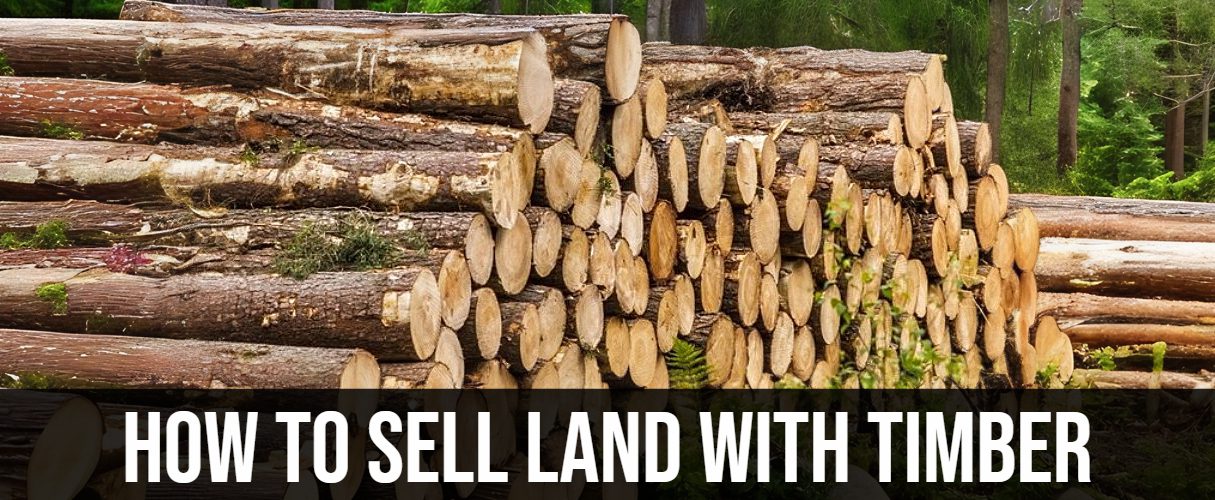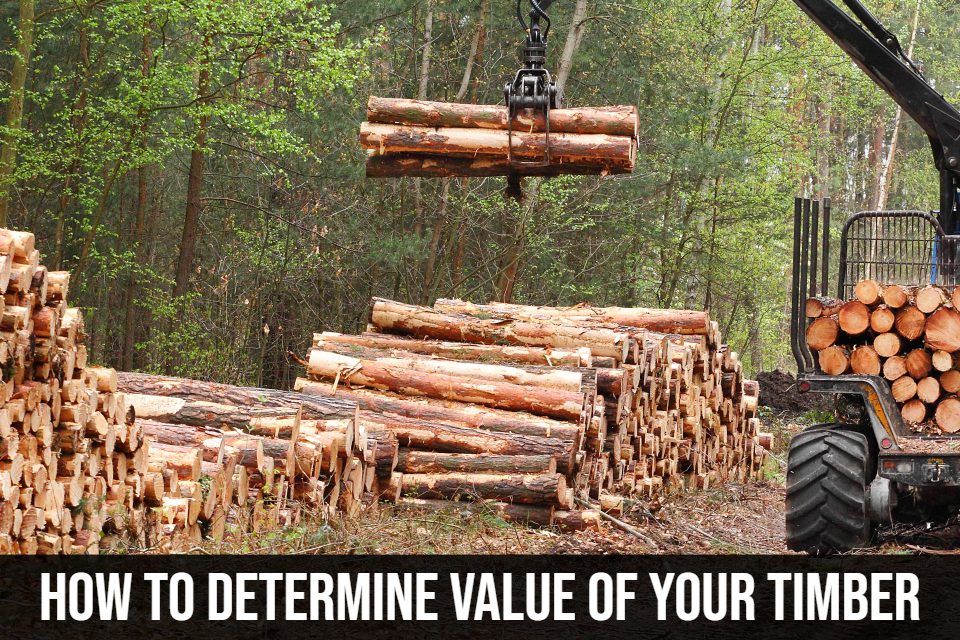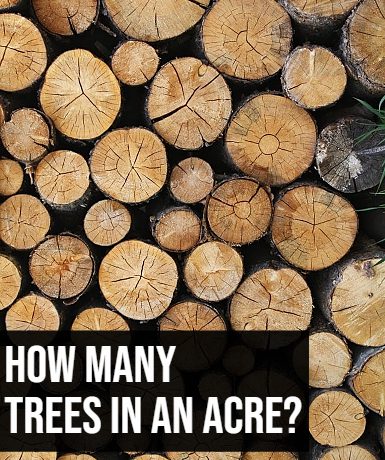
How to sell land with timber isn’t just about finding someone who appreciates a good tree hug—it’s about tapping into a niche market where the stakes and the stakes are both quite literal. This can be a lucrative endeavor, sure, but it comes with its own set of branches and roots that you need to untangle before you can see the forest for the trees in terms of profit. We’ll provide the insights and strategies you need to not only navigate this complex landscape but also to ensure you chop down any potential challenges to secure a fruitful and successful sale.
Understanding the nuances of how to sell timber land effectively is crucial. It’s about more than just counting tree rings—it’s about understanding market trends, knowing your timber’s worth, and negotiating deals that don’t leave you feeling stumped. So, let’s gear up, grab our metaphorical axes, and get ready to carve a path through the thicket of selling timber land.
1. Is it Better to Cut Timber Before Selling Land?
Deciding whether to cut the timber before you sell land with timber hinges on a variety of elements. Market conditions, the type of timber waving in the wind on your land, and what potential buyers might be looking for all play crucial roles in this decision-making process. While removing the timber might spruce up the property’s attractiveness and potentially pump up its market value, don’t forget that logging comes with its own costs—think cutting, hauling, and restoring the land post-harvest.
On the flip side, keeping the timber could attract buyers who dream of managing these green assets themselves. To cut or not to cut? It’s wise to chat with a professional forester who can assess the value of your timber and help you decide the best route to take when you aim to sell land with timber.
2. How Much Profit is an Acre of Timber?
The potential profit from an acre of timber can vary as widely as the types of trees you might find on the land. Factors like the species of the trees, their maturity, how densely they’re packed, and current timber market trends all influence how much green (and we’re not talking leaves) you might see. Generally, majestic hardwoods like oak and cherry are more lucrative than their softer cousins such as pine.
To get a realistic estimate of what your timber could bring in, it’s essential to consult with a professional forester. They can conduct a timber cruise—a detailed survey assessing the volume, health, and type of your timber—to give you a clearer picture of potential profits when you sell land with timber.
3. How Do You Determine the Value of Timber Land?
Evaluating the value of timber land isn’t as simple as checking out the view. You need to consider:
- The variety, age, and condition of the timber
- The lay of the land, its soil quality, and how easy it is to access
- Any environmental protections or limitations
- How close the land is to mills or other critical infrastructure
- The current mood of the timber market
To navigate these wooded waters, enlist the expertise of a professional forester. They can help you assess these factors thoroughly and provide a valuation for your timber land that reflects both its current state and future potential. Whether you want to sell land with timber in Arkansas (or anywhere else in the USA), we’re here to help!

4. What Trees are Worth the Most Money?
When planning to sell land with timber, it pays to know your trees. Generally, certain hardwood species hold more economic allure than others. Species like black walnut, white oak, red oak, and cherry are often the high rollers in the timber market. Their value can soar depending on their size, health, and the whims of market demand. Location also plays a role—what’s gold in one region might be commonplace in another. Always consider these factors when assessing which trees on your land might be worth the most.
When selling land with timber the age and growth rate of the trees play a role. Older trees tend to command prices as they yield more wood. The way in which the trees are harvested is also significant; opting for cutting, which targets only the most valuable trees can help maintain ecological harmony and attract environmentally conscious buyers. This strategy not boosts profits but also safeguards the property’s lasting worth.
5. What are the Methods of Selling Timber?
There are a few popular methods to sell land with timber, each with its unique flavor:
- Lump-Sum Sale: This is the “one and done” approach where you get paid upfront for the timber on your land, no matter how much is eventually harvested. It’s straightforward but requires careful estimation to ensure fair pricing.
- Pay-as-Cut Sale: Think of this as the “pay-per-view” version of timber sales. You earn based on the actual volume harvested, measured in board feet or tons, which can align payment more closely with reality than estimates.
- Timber Deed: This method involves selling the rights to the timber for a set period, letting someone else make the harvest calls while you cash in on the agreement.
- Timber Management Contract: For those who prefer a long-term relationship with their buyer, this agreement involves ongoing management and harvesting of your timber resources, promoting sustainable practices and potentially higher long-term returns.
Consulting with a professional forester can help you navigate these options and choose the best one to maximize your profits when you sell land with timber.
6. Does Logging Devalue Land?
Could logging turn your land from a prized asset into a proverbial chopped salad? Possibly, if not managed properly. Irresponsible logging can lead to soil erosion, habitat loss, and a drop in aesthetic and ecological value, which might scare off future buyers. However, employing sustainable logging practices can enhance the land’s value by fostering a healthier, more vigorous forest and better wildlife habitats. Essentially, it’s about striking the right balance to ensure your land remains both profitable and beautiful.
Lets now delve into the part. Sustainable logging can be likened to the packaging of forestry – it maintains order while also ensuring productivity. By choosing which trees to cut and establishing buffer zones, near water bodies you can prevent soil erosion and safeguard the habitats of adorable wildlife. This approach not enhances the aesthetic appeal of the land but also increases its desirability among buyers seeking responsibly managed properties. Therefore with a hint of humor and a sprinkle of consideration logging has the potential to enhance the attractiveness and value of your land in the term.
7. How Does Timber Pricing Work?
The art of timber pricing is influenced by a concert of factors including the species of your trees, their size and quality, and the whims of current market conditions. Timber typically sells by the board foot, cord, or ton. Prices are set based on a mix of supply and demand dynamics for different types of wood, transportation costs, and how much processing is involved before the wood can meet its final use.
To chop through the confusion and ensure you get the best possible deal, partnering with a professional forester can be invaluable. They’re like the navigators of the timber world, helping you understand market trends and haggle with buyers to secure a price that’ll make both your wallet and your woodland happy.
8. How Many Trees & Logs are in a Wooded Acre?

In a dense hardwood forest, you might count 50 to 100 trees per acre, while a planted pine plantation could be bustling with 500 to 700 trees. The number of usable logs will depend on factors like tree size, species, and management practices, influencing how much timber you can actually market.
Clearcut harvests will remove trees in all three categories: trees that are 5-7” diameter at breast height (DBH) are considered “pulpwood;” logs that are 8-11” are considered “chip-n-saw;” logs that are 12”+ in diameter are considered “sawtimber.” As logs get larger, the per-ton value of the trees increases; sawtimber that has a DBH of 18″ is more valuable than 12″ sawtimber, for instance. Whereas thinnings will remove only pulpwood and smaller logs that fall into the chip-n-saw category. Detailed data by harvest type, predominately from pine stands, demonstrate that:
- Clearcut harvests generate roughly 80-105 tons of timber per acre
- Average clearcut tons per acre: 87
- Thinning harvests generate between 25-40 tons of timber per acre
- Average thinning tons per acre: 32
9. What States are Best for Timber Land?
Wondering where to plant your investment roots? The best states to sell land with timber can vary widely depending on the type of trees you’re dealing with and market specifics. Here’s a quick rundown:
- Southeastern United States: Home to vast stretches of pine plantations, this region boasts a robust timber market. States like Georgia, Alabama, and Mississippi are hotspots if you’re looking to sell land with timber, especially those lush, needle-bearing types.
- Pacific Northwest: If softwood is your game, Oregon and Washington are where you want to be. These states are famous for their copious supplies of Douglas fir and Western hemlock, making them a timber seller’s paradise.
- Northeastern United States: For those with a penchant for hardwood, the Northeast offers a treasure trove of species like maple, oak, and cherry. States such as Pennsylvania, New York, and Vermont are rich with these valuable resources.
Choosing the best state for selling your timber land ultimately hinges on aligning your specific forestry assets with the regional markets that will value them most.
Conclusion on How to Sell Land with Timber
Selling land with timber isn’t just about knowing your trees—it’s about mastering a complex market with many moving parts. By understanding how timber pricing works, familiarizing yourself with the best regions for timber sales, and employing the expertise of a professional forester, you can not only boost your potential profits but also navigate the transaction with confidence. Whether you’re thinning out a small plot or overseeing vast woodland, the right knowledge and preparation can ensure that when you sell land with timber, you’re making the most informed decisions for your land and your legacy.
But wait, there’s more! Think of selling land with timber as a grand orchestration where you’re the maestro. Timing the market, knowing the value of your green gold, and getting the right help can turn your timber sale into a symphony of success. And let’s be real—who doesn’t want to be the maestro of their own woodland wonderland? So, arm yourself with the right info, maybe throw in a professional forester for good measure, and you’ll be conducting your way to a profitable and sustainable timber sale. Your land, your rules, your legacy. Happy selling!